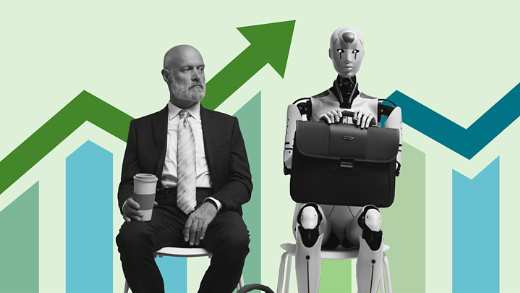Nearly three months after COVID-19 caused markets to crash and sent countries across the globe into lockdown, debates continue over what the post-COVID world will look like and the extent of the long-term damage. Sunil Krishnan remains cautious.

After a sharp downturn in March as financial markets finally woke up to the economic consequences of a world in lockdown, risk assets have recovered substantially. Between March 23 and June 8, the S&P 500 rose by almost 45 per cent and the FTSE 100 by almost 30 per cent (source: Bloomberg). Other markets have seen similar recoveries. For example, the yield on the Bloomberg Barclays US High Yield Index came down from 11.7 per cent on March 23 to just over six per cent on June 8. The requirement now is to take stock and analyse to what extent those rallies are justified and consider where things could go from here.
The case for optimism
Contrary to past crises and despite one of the worst ever drops in global economic activity, the combination of unprecedented fiscal and monetary policy support from governments and central banks and visibility as to what will end the crisis – either a vaccine, herd immunity or a sufficient fall in the number of new cases – make it unlikely to leave as many long-term scars on economies. Whether insolvency issues, long-term unemployment or general caution pushing savings up and investment down, many observers believe this time will be different.
Economies see a 30 to 50 per cent drop in activity every weekend with no damage done
Proponents of this thesis argue economies see a 30 to 50 per cent drop in activity every weekend, with no damage done thanks to the predictability of activity resuming on Mondays, and contracts not getting terminated over the weekend.
In addition, policymakers have acted early to unleash exceptional support. The Federal Reserve (Fed) has cut interest rates to zero,1 while the Bank of England is considering the possibility of negative interest rates.2 Additionally, across most developed countries fiscal support came in early and to a much greater extent than during the global financial crisis, through initiatives such as furlough schemes or more generous unemployment support.
The case for caution
Yet for all the exceptional support and stimulus, the long weekend analogy doesn’t answer all the questions raised by the pandemic. While governments made the decision to impose lockdowns, similar to offices shutting on a Friday evening, they won’t necessarily find it easy to lift them both from a policy and a behavioural point of view. For instance, it is true several US households may be better off now than when they were working for low-wage jobs thanks to generous unemployment benefits. However, translating that into a prediction of rising economic activity neglects the fact people may build up precautionary savings against future risks.
Fiscal support schemes cannot continue at this scale forever
Nor can fiscal support schemes continue at this scale forever. US politicians have expressed discomfort about such generosity continuing indefinitely, and UK chancellor Rishi Sunak has indicated companies will have to shoulder more of the burden when the furlough scheme is extended. It is unclear whether companies will be willing or able to do this.
The third cause for caution is that, to the extent many unknowns remain about the virus, it is hard to see people flocking back to restaurants and airports in pre-crisis numbers. Finding and mainstreaming the distribution of a vaccine would be game-changing but is not expected for several months at the earliest. Until then, people’s uncertainty around their health or that of their vulnerable loved ones will limit the economic rebound.
What caution means for valuations
The strong recovery in risk assets is consistent with investors having essentially written off the first and second quarters. Perhaps more concerning is what current valuations imply for the strength of recovery in the second half of this year and 2021.
At the end of May, the MSCI All Country Index’s forward price-to-earnings ratio was 18.7 times the 12-month forward earnings, with MSCI’s US index at 22.1 times. These are comfortably above pre-crisis levels, yet earnings estimates have since come down by around 20 per cent for the calendar year 2020 (source Datastream).
Would investors be willing to pay the same valuation multiples as they were before the crisis?
This raises an interesting question. Supposing earnings recover strongly – not to the point of delivering growth in 2020, but back to where they were at the end of 2019 – would investors be willing to pay the same valuation multiples as they were before the crisis? With so many lingering uncertainties, we prefer to err on the side of caution for our multi-asset portfolios.
Conservatism reigns
We used the rise in stock markets to reduce equity weights overall, while on a relative basis tilting the portfolios towards areas that should have greater earnings stability; for instance, markets like Switzerland and US consumer staples.
With the Fed considering whether to explicitly set target rates for bonds as well as short-term interest rates,3 some bond markets can also play a protective role for portfolios.
Investment-grade bonds look attractive, too. Central banks have explicitly pledged support and launched programmes that, though not fully up and running, could buy investment-grade corporate bonds.
The Fed and the Treasury are now buying corporate bond exchange-traded funds
Support has been running for longer in Europe, but the Fed and the Treasury are now buying corporate bond exchange-traded funds – a programme that has the firepower to buy up to 20 per cent of the market. In reality, this is more of a backstop and, as long as markets continue to function properly, the Fed is unlikely to step in. Still, it is reassuring for investors to know the central bank is ready and willing.4
The average spread of the Barclays Global Aggregate Corporate Index over US Treasuries was down to 1.54 per cent as of June 19, having peaked at 3.26 per cent on March 23. However, for an asset more than one central bank has said they would support and whose yield dropped to below one per cent in February, the risk-reward trade-off looks attractive. Monetary support should also mitigate the risk of downgrades, particularly the inclusion of recently fallen angels in the Fed’s purchasing programme.5 Consequently, we have increased our exposure.
None of this should ignore default risks. Even if we do experience a V-shaped recovery, the solvency of many companies will be severely challenged – particularly smaller ones. And while government support has helped, and banks have shown forbearance on delayed loan repayments, that will not last indefinitely. The solvency issues in the pipeline now will come to light in the coming months. Investors should proceed with caution.
















